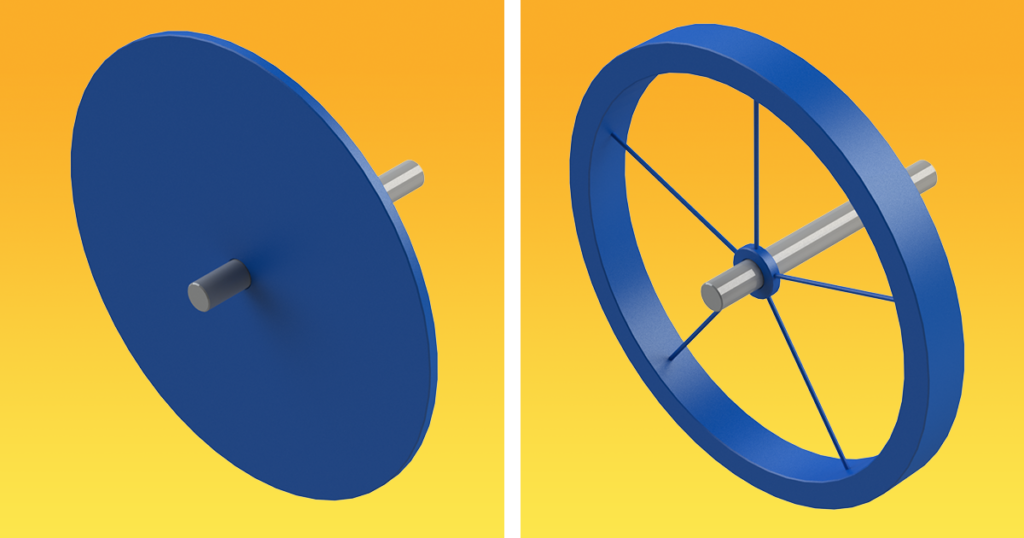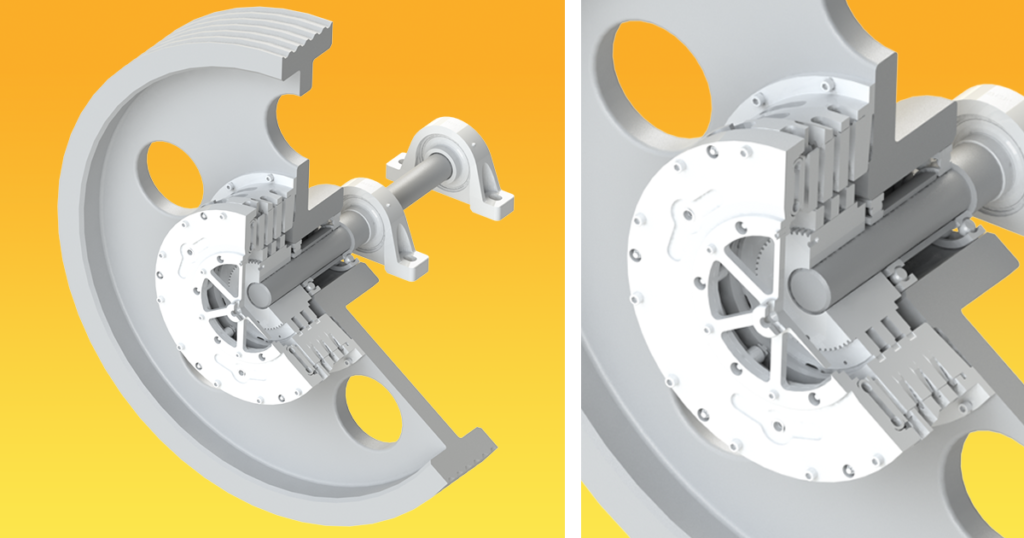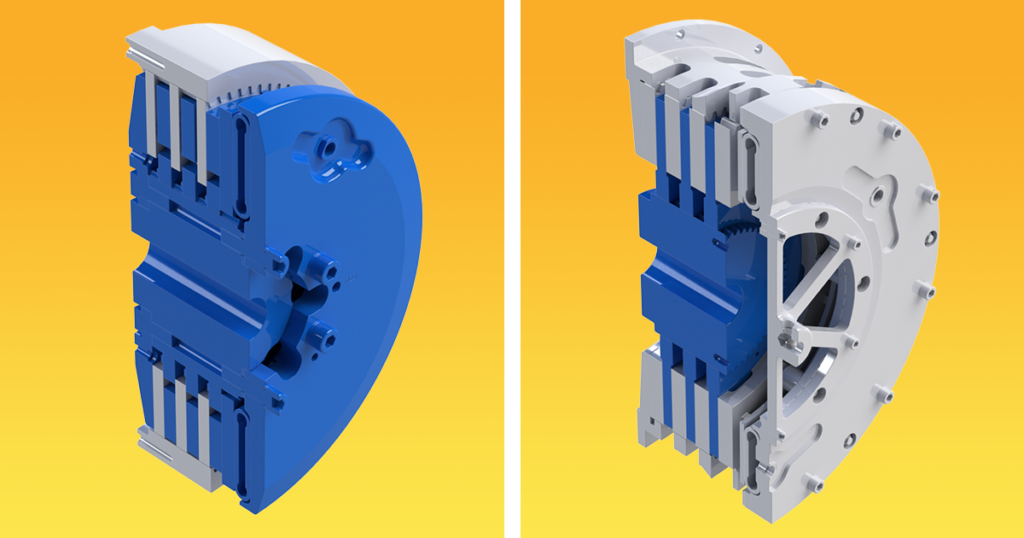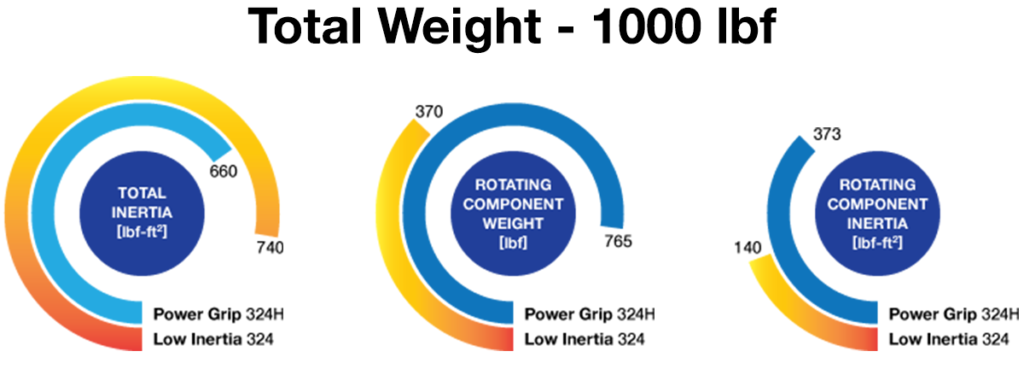What is a Low Inertia clutch? If you are asking yourself this question, you have found the right place.
To explain what a Low Inertia clutch is, first we need to understand what inertia is. Wikipedia defines the mass moment of inertia of a rigid body as the quantity of torque needed for a desired angular acceleration about a rotational axis.
What exactly does this mean?
In simpler terms, it means an object’s weight and the location of this weight in relation to the shaft it rotates on, determines how much energy it takes to speed up or slow down the object. For example, a 4-inch diameter flat disc that weighs 1 pound will have less rotational inertia than a 4-inch diameter ring that also weighs 1 pound.

Next, we need to look at the forerunner product of the Low Inertia Clutch, so we can better appreciate its design.
The initial WPT clutches, the Power Grip models, were engineered for use on drilling rigs. These clutches provided a mechanical connection and disconnection between the diesel engines, the drive system, and the drum.
The Power Grip clutch design has the driving ring attached to the flywheel, pully, or sprocket which is connected to the friction discs with gear teeth. During operation, the drive ring and frictions are constantly spinning with the input of the machine.

The machine action is triggered when the clutch is engaged. This causes the frictions to lock up with the center plates. The center plates are connected to the hub with gear teeth, which is connected to the main clutch shaft as well as the back and air tube holding plates.
The duty cycle of clutches on a drilling rig was low enough that heat generation and loss of energy due to frequently starting a stopping was minimal. It was not until the clutches began seeing use outside of the oil and gas industry that a need for a new design was necessary.
With high cycle applications, such as presses and shears, the clutch will engage and disengage several times a minute. In some extreme cases, they may even reach as many as 14 cycles per minute. This frequent starting and stopping requires a lot of power. It also generates a lot of heat. To reduce the amount of energy required and heat generated, the Low Inertia design reduced the inertia of the clutch. This was done by swapping some of the components that start and stop each cycle.

This design change makes a significant difference in the amount of energy consumed and produced during each start and stop cycle. Even with similar overall assembly weight, the rotating inertia is decreased by reducing the number of components starting and stopping and the overall weight of these components. Further reduction is seen because the weight of the rotating components is more closely located around the shaft.

So, that is a brief explanation of a Low Inertia clutch. For cyclic applications that require frequent starts and stops, this design has major benefits. However, depending on the application, a Power Grip clutch—even with a larger inertia—still may be a good choice.
For more information on Power Grip or Low Inertia clutches, please call: (940)761-1971 or e-mail WPT Power today at: info@wptpower.com.
